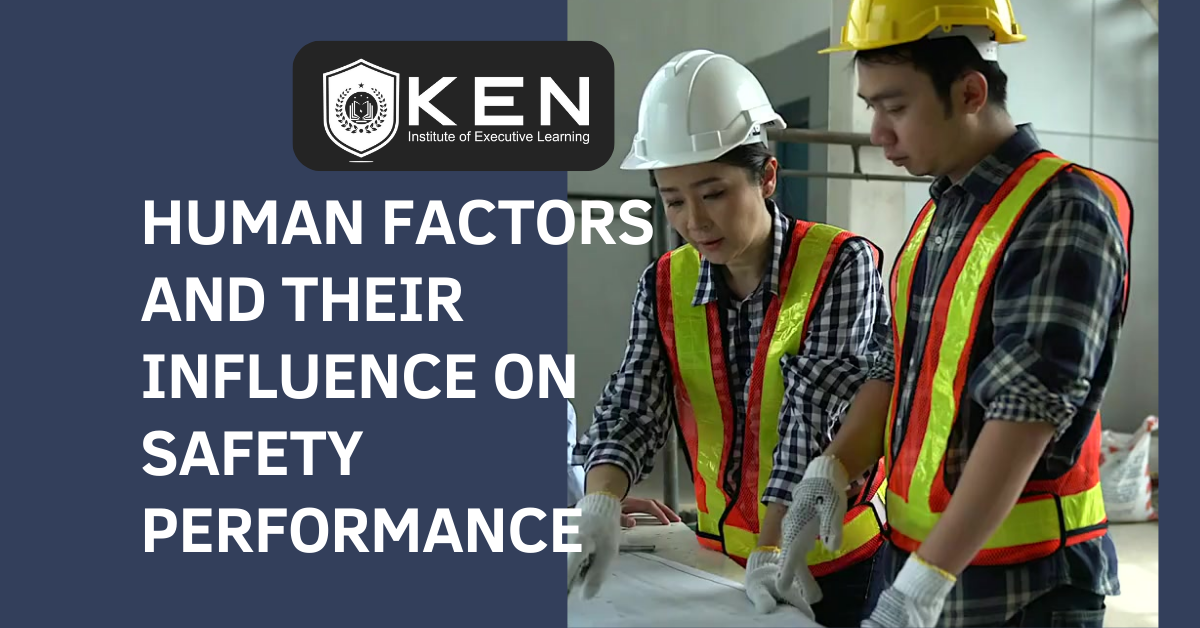
It’s been estimated that up to 90% of all accidents are due to “Human Factors”. The fact is that human error is the number one cause of accidents, injuries, and fatalities in the workplace. It is the priority for businesses to focus on human factors and their influence on safety performance.
The HSE has defined human factors as “environmental, organizational and job factors, and human and individual characteristics which influence behavior at work to affect health and safety.”
Human Factors that can lead to human error include:
- Fatigue
- Stress
- Lack of experience
- Inadequate training
- Poor supervision
- Organizational problems
- Personal problems

It is important to note that human error is not always the cause of an accident. For example, accident due to machine malfunction would not be classified as human error.
Characteristics of Human Factors
Human Factors are any characteristics of a person that can affect their ability to safely perform a task. They can have a big impact on workplace safety.
For example, employees may be more likely to make a mistake if they feel stressed or fatigued. This could lead to an accident.
There are mainly 3 categories of Human Factors are considered:
- Cognitive abilities
- Physical abilities
- Emotional states
These are known as human factors as they each have human involvement. The personal factors that differentiate one person from another.
For example, a person may be classified as being highly accident-prone. However, if they work in an organization that does not have good systems and controls, the chances of them having an accident are greatly increased.
On the other hand, a person who is not normally accident-prone may have an accident because of a one-off error in judgment.
How to Improve Safety Performance in the Workplaces
- First, the human factors should be identified that are most likely to impact safety in their workplace. Once these factors have been identified, businesses can implement procedures to mitigate the risks and prevent accidents from happening.
- The most important step for improving safety performance is to provide employees with proper training. This will ensure that they know the risks and how to safely perform their tasks.

- Employees should be encouraged to report any safety concerns. By taking these steps, businesses can help to improve safety in the workplace and prevent accidents from happening.
The Link between Human Factors & Their Influence on Safety Performance
Over the years, several studies have examined the link between various accident types, graded in severity and near misses. It is clear from many research projects that the major factors in most accidents are human factors.
The study indicated that there would be an accident for every 10 near misses. It is clear that if near misses are continually ignored, an accident will result. Further, the HSE Accident Prevention Unit has suggested that 90% of all accidents are due to human error, and 70% could have been avoided by management’s earlier (proactive) action.

Organizational Human Factors
Organizational human factors arise from how an organization is structured and managed. The systems, processes, and practices in place can influence behavior and, as a result, health and safety. Similarly, if staff are not properly trained or supervised, this can lead to mistakes that could upset customers.
A company having a high rate of accidents may be caused by several different factors such as:
- Inadequate staffing levels
- Poorly designed jobs
- Lack of training
- Inadequate supervision
- Poor housekeeping standards
In some cases, there may be several contributory factors such as: a worker, trips on a loose cable may be classified as having had an accident due to a slip. However, if the cable was lying on the floor because of poor housekeeping, this would be classified as a human organizational factor. If the machine had not been maintained properly, this would be classified as a human organizational factor.
Job Human Factors
Job human factors are those that relate to the design of the job. For example, if a job involves repetitive tasks, there is a risk of repetitive strain injury (RSI).
The job design should consider ergonomics to minimize the risks of RSI. A poorly designed job can lead to errors and rework, which can impact productivity and quality.

Personal Human Factors
Personal human factors are those that relate to the individual.
This includes: a person’s age, health, fitness, and psychological state can influence their work behavior.
Investigation
When investigating an accident, it is important to consider all contributory factors, not just those immediately apparent. For example, if a worker slips on a wet floor, it should not be blamed the accident on the worker for not being more careful. However, if the floor was wet because of a leaky pipe that had not been repaired, this would be classified as a human organizational factor.
Human factors are often considered health and safety, but they are also relevant to other aspects of work, such as:
Productivity, Quality, and Customer Satisfaction.
“Join Ken Institute for comprehensive Health and Safety courses led by expert faculty, ensuring your readiness to tackle workplace fire emergencies effectively.”
To expand your perception around the health and safety topic,
Get in touch with us at: info@keneducation.in
Visit our website: www.keneducation.in
Call us on +917569034271
Let’s connect on Facebook, YouTube, LinkedIn, and Instagram.
Tag: Health & Safety Health & Safety Training

